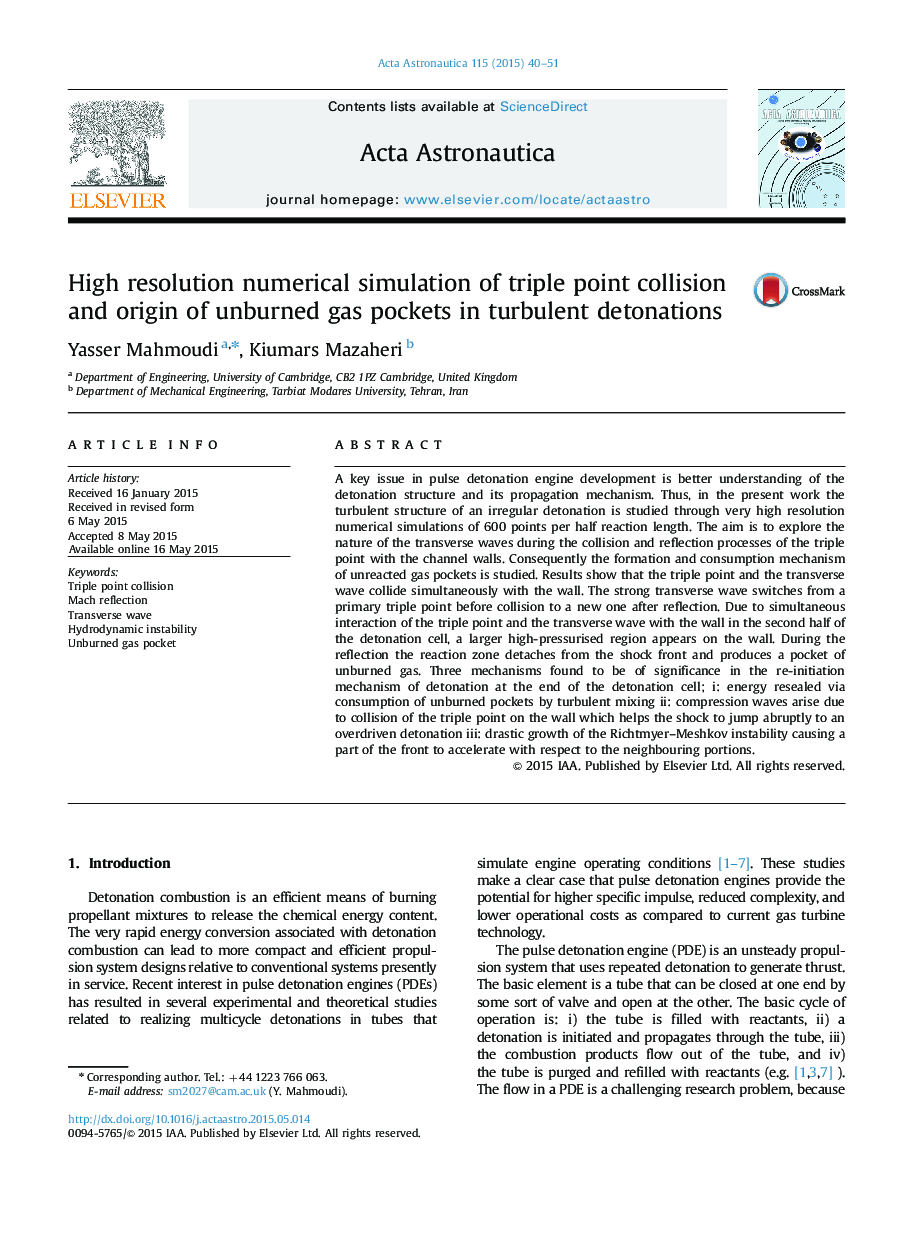| Article ID | Journal | Published Year | Pages | File Type |
|---|---|---|---|---|
| 8056394 | Acta Astronautica | 2015 | 12 Pages |
Abstract
A key issue in pulse detonation engine development is better understanding of the detonation structure and its propagation mechanism. Thus, in the present work the turbulent structure of an irregular detonation is studied through very high resolution numerical simulations of 600 points per half reaction length. The aim is to explore the nature of the transverse waves during the collision and reflection processes of the triple point with the channel walls. Consequently the formation and consumption mechanism of unreacted gas pockets is studied. Results show that the triple point and the transverse wave collide simultaneously with the wall. The strong transverse wave switches from a primary triple point before collision to a new one after reflection. Due to simultaneous interaction of the triple point and the transverse wave with the wall in the second half of the detonation cell, a larger high-pressurised region appears on the wall. During the reflection the reaction zone detaches from the shock front and produces a pocket of unburned gas. Three mechanisms found to be of significance in the re-initiation mechanism of detonation at the end of the detonation cell; i: energy resealed via consumption of unburned pockets by turbulent mixing ii: compression waves arise due to collision of the triple point on the wall which helps the shock to jump abruptly to an overdriven detonation iii: drastic growth of the Richtmyer-Meshkov instability causing a part of the front to accelerate with respect to the neighbouring portions.
Related Topics
Physical Sciences and Engineering
Engineering
Aerospace Engineering
Authors
Yasser Mahmoudi, Kiumars Mazaheri,
